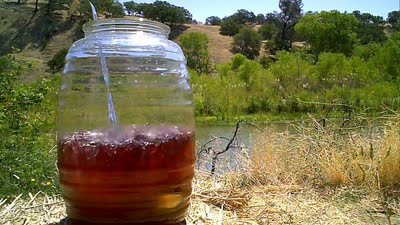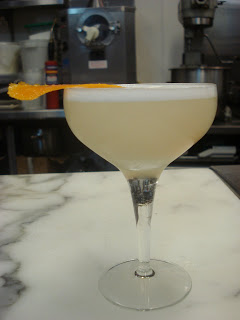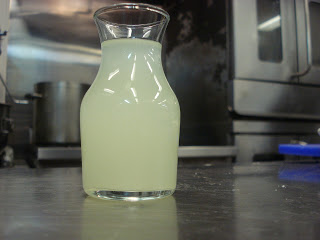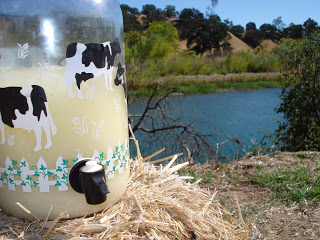I have a predilection for sherry-based cocktails for drinking on hot Sundays while relaxing with friends.
You may recognize the setting for this photo as the same as the one for my Italian Lemonade post. Last year I made a sherry and milk lemonade for exactly the same purpose: kickin’ it on the river the Sunday after a big party at my friend Jen’s farm in the Capay Valley. I figured, why break with tradition?
This time it was our friend Beth’s birthday. We ate under the stars and played in the river. I napped and read about pickles. We took eggs warm from the hens. Jen made pita from scratch. There was a pinata for the kids, and another one that was supposed to be for adults, but I never saw it get cracked. (What is in a pinata for adults? Weed and porn?) We slept under the stars. These parties are always fabulous.
So I needed a low-alcohol drink for the day after such revelry. Sherry-based drinks are ideal, and a brief search turned up a Sherry Wine Punch listed in Harry Johnson’s “New & Improved Illustrated Bartender’s Manual” published in 1888. It includes Orchard Syrup, an ingredient I have been working on for a while. This time I made it with extra lemon juice and more warm spices like cloves and allspice. It came out a bit too apple-pie-like, but the cocktail was still tasty. Next time I think I’m going to try Chinese 5-spice powder.
I made it all in a large jug for sharing, but here it is scaled down for one:
Sherry Wine Punch
3 oz amontillado sherry
1 oz orchard syrup
1/4 oz lemon juice
3/4 oz red wine
Stir sherry, orchard syrup and lemon juice together in a frappe glass, then pack crushed ice in to fill and stir briefly. Float red wine on top.
Enjoy!



